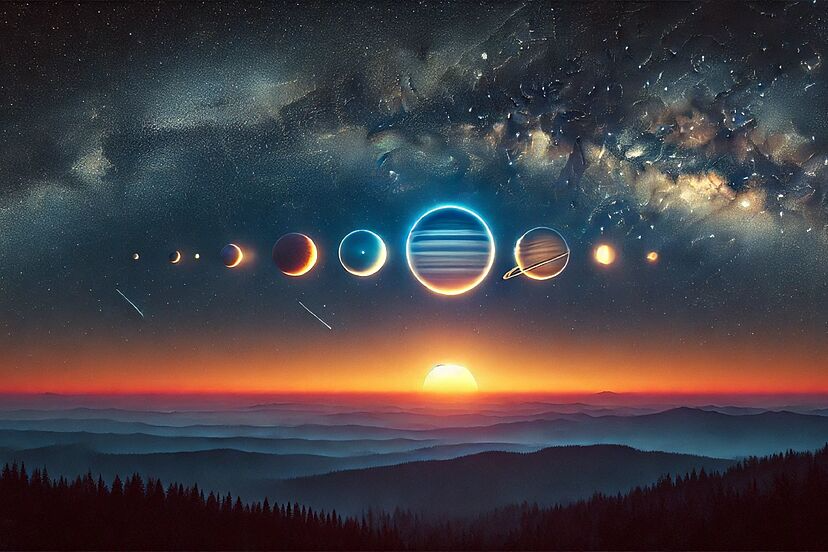
Planetary Alignment 2025: What is a Planetary Alignment?
Have you ever gazed up at the night sky and wondered at the intricate dance of the planets? 2025 is a year of celestial spectacles, with a remarkable planetary alignment captivating stargazers around the globe. This rare cosmic event, often referred to as a "planet parade" or "planetary conjunction," offers a unique opportunity to witness multiple planets gracing the pre-dawn sky in a breathtaking display.
What is a Planetary Alignment?
A planetary alignment occurs when several planets appear to cluster together in a relatively small region of the sky as viewed from Earth. This is a visual phenomenon, not a true physical alignment in space. The planets maintain their vast distances from each other within our solar system.
The 2025 Planetary Alignment: A Celestial Showstopper
The 2025 alignment is particularly noteworthy for featuring six planets:
Mercury: The smallest and closest planet to the Sun.
Venus: Often referred to as Earth's "sister planet," Venus is the brightest planet in our sky.
Mars: The "Red Planet," known for its reddish hue.
Jupiter: The largest planet in our solar system, a gas giant with prominent bands.
Saturn: The "Ringed Planet," renowned for its stunning system of rings.
Uranus: A distant ice giant, challenging to spot with the naked eye.
When and Where to See the 2025 Planetary Alignment
Timing: The best time to witness the 2025 planetary alignment will be in the pre-dawn hours, shortly before sunrise.
Visibility: The visibility of the planets will vary depending on your location, light pollution levels, and weather conditions.
Finding the Planets: Use a stargazing app or a planetarium software to pinpoint the exact locations of the planets in the sky.
Tips for Observing the Planetary Alignment
Find a Dark Location: Escape the glare of city lights and seek out a location with minimal light pollution.
Use Binoculars or a Telescope: While some planets might be visible to the naked eye, binoculars or a telescope will enhance your viewing experience.
Be Patient: Allow your eyes to adjust to the darkness for optimal viewing.
Check the Weather Forecast: Clear skies are essential for enjoying any celestial event.
The Significance of Planetary Alignments
While planetary alignments are primarily a visual spectacle, they have also captured the human imagination for centuries.
Astrological Significance: In astrology, planetary alignments are believed to have subtle influences on human life and events.
Scientific Importance: These events provide astronomers with opportunities to study the planets and their interactions.
Cultural Significance: Planetary alignments have been depicted in art, literature, and mythology throughout history.
Beyond the 2025 Alignment: Other Celestial Wonders
The 2025 planetary alignment is just one of many celestial wonders that grace our skies.
Meteor Showers: Witness the breathtaking display of shooting stars during annual meteor showers like the Perseids and Geminids.
Eclipses: Experience the awe-inspiring phenomenon of a solar or lunar eclipse.
Comets: Catch a glimpse of these icy wanderers as they pass through our solar system.
A Call to Action: Embrace the Wonder of the Cosmos
The 2025 planetary alignment is a reminder of the vastness and beauty of the universe. Take some time to step outside, look up, and reconnect with the wonders of the cosmos.
Plan a Stargazing Trip: Find a remote location away from city lights and enjoy a night under the stars.
Join a Local Astronomy Club: Connect with fellow stargazers and learn more about the night sky.
Share Your Experiences: Capture photos of the planetary alignment and share them with friends and family.
By embracing the wonders of the universe, we cultivate a sense of awe and wonder that enriches our lives and connects us to something larger than ourselves.
